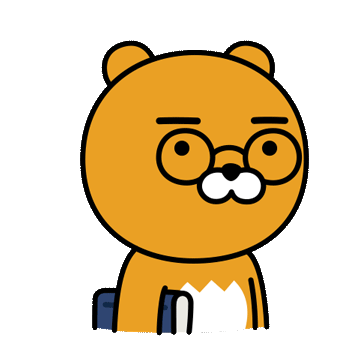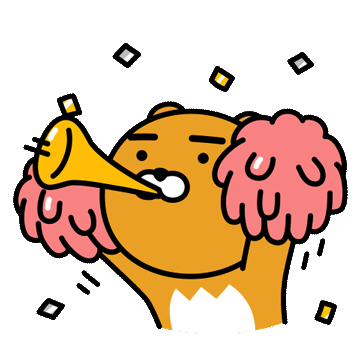제목: 개인의 성장과 성공을 위한 긍정적인 사고방식 기르기
소개
인생의 여정에서 우리의 사고방식은 경험을 형성하고 우리가 달성하는 결과에 영향을 미치는 데 중요한 역할을 합니다. 긍정적인 사고방식을 받아들이는 것은 세상에 대한 우리 자신의 인식을 변화시킬 뿐만 아니라 우리 삶에 좋은 것들을 끌어들이게 됩니다. 이 에세이는 개인의 성장으로 이어지고, 자존감을 높이며, 긍정적인 결과를 발현할 수 있는 길을 열어줄 수 있는 실행 가능한 단계와 인지 습관을 탐구합니다.
섹션 1: 최고의 자신이 되기:훨씬 더 나은 내가 되는 방법(행동지향)
자기 개선의 길을 시작하려면 개선할 수 있는 행동 영역을 식별하는 것이 중요합니다. 가장 먼저 품위 없는 매너를 버리는 것입니다. 여기에는 욕설, 투덜거림, 경박함, 약속 위반과 같은 행동을 제거하겠다는 성찰과 다짐 및 행동하는 것을 포함합니다. 그러한 행동은 우리에게 좋지 않은 영향을 미칠 뿐만 아니라 우리 삶에 부정적인 영향을 미치게 됩니다. 또한, 다른 사람을 비웃고 비밀을 말하는 등 신뢰를 배반하는 행동은 관계를 손상시키고 개인적인 성장을 방해할 수 있습니다.
또, 도움을 줄 사람을 찾고 도움을 요청하는 것도 또 다른 중요한 측면입니다. 다른 사람을 돕는 행위는 우리 자신에 대해 더 나은 기분을 갖게 할 뿐만 아니라 지역 사회와의 유대도 강화합니다. 동시에, 도움을 요청하는 것은 배우고 성장하려는 의지를 보여주기 때문에 변화의 표시입니다. 도전을 당연하게 여기는 것이 유혹적일 수 있지만, 작은 목표에는 작은 희생이 필요하고 큰 목표에는 더 큰 헌신이 필요하다는 점을 인식하는 것이 발전하는 열쇠입니다.
섹션 2: 긍정성을 불러일으키는 사고방식 함양
우리는 인생관에 큰 영향을 미칠 수 있는 인지적 변화를 마주하게 됩니다. 복잡성을 피하려면 외부 압력에 휘둘리지 않고 본질적인 가치와 요구 사항을 준수하여 의사결정을 단순화해야 합니다. 이를 통해 우리는 불필요한 스트레스에서 벗어나 긍정적인 에너지가 흐를 수 있는 여류를 만듭니다.
사회적 연령을 잊는다는 개념도 마찬가지로 좋습니다. 사회는 종종 성취에 대해 엄격한 일정을 부과하여 과도한 스트레스를 유발합니다. 인생은 개인적인 여정이고 성취는 모든 연령대에서 가능하다는 생각을 받아들이면 불필요한 제약 없이 꿈을 추구할 수 있는 힘을 얻을 수 있습니다.
걱정을 미루는 것은 마음챙김의 원리와 일치합니다. 미래의 불확실성에 대해 걱정하기보다는 현재 순간에 집중하면 정신이 명료해지고 불안감이 줄어듭니다. 이러한 관행은 긍정적인 사고방식을 키울 뿐만 아니라 효과적인 의사 결정과 문제 해결을 장려합니다.
마지막으로, 삶을 물음표가 아닌 느낌표로 인식하는 것은 열정과 확신을 가지고 살아가는 삶의 본질로 인정하고 받아들입니다. 을 요약합니다. 이러한 관점은 우리가 모든 경험이 우리의 성장과 개인적 발전에 기여한다는 것을 알고 경이로움과 설렘을 가지고 삶의 도전에 접근하도록 격려합니다.
결론
긍정적인 사고방식을 기르고 적극적인 행동을 취하는 것은 더 나은 자신이 되기 위한 중요한 단계입니다. "섹션 1"에 설명된 실행 가능한 단계를 준수하고 "섹션 2"에 설명된 인지 습관을 수용함으로써 우리는 긍정성과 성공을 불러일으키는 환경을 조성할 수 있습니다. 개인적인 성장은 헌신, 성찰, 발전하려는 진정한 열망이 필요한 지속적인 여정이라는 점을 기억하십시오. 이 변화의 길을 시작하면서 긍정적인 사고방식이 성취, 행복, 의미 있는 연결로 가득 찬 미래로 당신을 인도하기를 바랍니다.
위글은 아래 요약글을 기반으로 chatGPT에서 작성한 글입니다.
더 나은 나를 만들고, 좋은 일이 생기는 긍정의 마음습관을 가지도록 에세이 작성해주세요. 작성할 때 아래의 2개 단락으로 된 요약글을 참고로 해서 만들어 주세요.
02-01. 훨씬 더 나은 내가 되는 방법(액션위주)
-품위없는 모든 버릇 버리기(셀프평가 -욕, 투덜, 경박(금방삐지고 울컥하는것), 남 비웃는 것, 약속 어기는 것, 비밀말하기)
-도와줄사람을 찾고 도움을 요청하기(계획할 때 도움 청할 사람까지 고려)
-힘든 게 당연하다고 생각하기(작은 목표엔 작은 희생, 큰 목표엔 큰 희생이 필요)
-매일일기쓰기
-시간에 대해 느슨하게 생각하지 않기
02-02. 깜짝 놀라게 좋은 일이 생기는 생각 습관
-Should be 콤플렉스 탈출하기
(꼭 ~ 해야 돼 등 타인의 기준에 따라야하는 것)
-사회적연령을 잊어라 (몇살에 뭘 해야 돼)
-고민하는 것은 미루면 미룰 수록 좋다
-인생은 물음표가 아닌 느낌표 (다음은 잘하면 되지/ 왜 안되지X)
Title: Cultivating a Positive Mindset for Personal Growth and Success
Introduction
In the journey of life, our mindset plays a crucial role in shaping our experiences and influencing the outcomes we achieve. Adopting a positive mindset not only transforms our own perception of the world but also attracts good things into our lives. This essay delves into actionable steps and cognitive habits that can lead to personal growth, enhance our self-esteem, and pave the way for the manifestation of positive outcomes.
Section 1: Becoming the Best Version of Yourself
To embark on the path of self-improvement, it's essential to identify areas in our behavior that can be refined. The first step, as suggested in "02-01: How to become a much better me (action-oriented)," is to abandon undignified manners. This involves introspection and a commitment to eliminating behaviors like swearing, grumbling, frivolity, and breaking promises. Such actions not only reflect poorly on us but also contribute to negativity in our lives. Additionally, laughing at others and betraying trust can damage relationships and hinder personal growth.
Finding someone to help and asking for help is another crucial aspect. The act of helping others not only makes us feel better about ourselves but also strengthens our bonds with the community. Simultaneously, asking for help is a sign of strength, as it shows a willingness to learn and grow. While taking challenges for granted may be tempting, recognizing that small goals require sacrifices and larger goals demand greater dedication is key to progress.
Section 2: Cultivating a Mindset that Invites Positivity
Moving on to "02-02: Habits of thinking that surprise good things," we encounter cognitive shifts that can significantly impact our outlook on life. Escaping complexity involves simplifying decisions by adhering to essential values and needs rather than being swayed by external pressures. This way, we free ourselves from unnecessary stress and create space for positive energies to flow.
The concept of forgetting social age is equally liberating. Society often imposes rigid timelines for achievements, causing undue stress. Embracing the idea that life is a personal journey and achievements are possible at any age empowers us to pursue our dreams without unnecessary constraints.
Postponing worry aligns with the principle of mindfulness. Focusing on the present moment rather than fretting about future uncertainties enhances mental clarity and reduces anxiety. This practice not only nurtures a positive mindset but also encourages effective decision-making and problem-solving.
Lastly, perceiving life as an exclamation mark and not a question mark encapsulates the essence of living with enthusiasm and certainty. This perspective encourages us to approach life's challenges with a sense of wonder and excitement, knowing that every experience contributes to our growth and personal development.
Conclusion
Cultivating a positive mindset and adopting proactive behaviors are vital steps towards becoming a better version of oneself. By adhering to the actionable steps outlined in "02-01" and embracing the cognitive habits described in "02-02," we can create an environment that attracts positivity and success. Remember, personal growth is a continuous journey that requires commitment, introspection, and a genuine desire to evolve. As you embark on this transformative path, may your positive mindset guide you to a future filled with accomplishments, happiness, and meaningful connections.

'낙서장 > chatGPT' 카테고리의 다른 글
| chatGPT가 말하는 리더쉽의 정의 (2) (0) | 2023.08.26 |
|---|---|
| chatGPT가 말하는 리더쉽의 정의 (1) (0) | 2023.08.26 |
| chatGPT가 관리자에게 제안하는 직원 자존감 높여주기 (2) | 2023.08.24 |
| chatGPT도 모르는 AutoGPT (chatGPT 바보~) (1) | 2023.08.23 |
| chatGPT에게 물어봅니다. Generative AI로 돈 벌 수 있을까? (0) | 2023.08.23 |





















